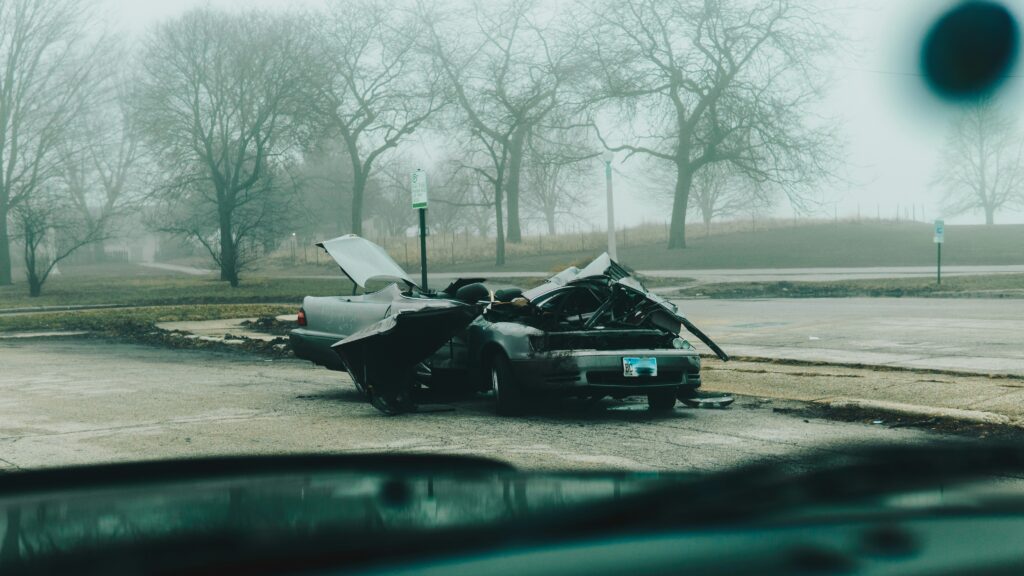In the heart of the Midwest lies Missouri, a state known for its sprawling landscapes, vibrant cities, and bustling highways. For many Missourians, driving is not just a means of transportation but an integral part of daily life.
Whether it’s commuting to work, embarking on a road trip, or simply running errands around town, driving is ingrained in the fabric of Missouri culture. But the privilege of driving comes at a cost. In recent years, drivers across the state have been feeling the pinch of escalating insurance premiums.
A 2024 annual auto insurance report revealed that the average cost of full coverage has increased 26% country-wide in the US this year. The report also disclosed that among the 50 states, Missouri was the state with the biggest increase: a whopping 44%. The full coverage rates in the state, which was $1,943 in 2023, have moved upward to $2,801 in 2024.
Keeping these stats in mind, it is natural for Missourians to wonder what has been driving this massive surge in the state’s car insurance rates. In this article, we are going to break down the leading causes behind this phenomenon by exploring the driving and accident trends in Missouri.
Missouri’s Driving and Accident Trends – A Major Contributor to the Insurance Rate Surges
The role of insurance is to cover any potential damage your vehicle might incur. This makes it clear why Missouri’s driving and accident trends heavily influence surging car insurance rates experienced across the state.
From bustling city streets to rural highways, the way Missourians drive and the frequency of accidents directly impact the cost of insurance premiums. Let’s break down this contributor into smaller segments to understand them better:
Are the Drivers At Fault? What You Need to Know
While we agree that the factors influencing car insurance rate surges are multifaceted, there’s no denying that drivers lie at the center of it.
This is especially true for Missouri, which was ranked number 2 on its list of States with the Worst Drivers. In this list – updated in March 2024 – Missouri falls right after Colorado, with 72% of the state’s drivers admitting to poor driving behavior and habits. While the article has highlighted aggressive honking as the most frequently admitted poor behavior, that’s certainly not all.
Among other poor driving habits of the state’s drivers are speeding, aggressive driving, driving under the influence of alcohol, and distracted driving. We’ll delve deeper into these later in our article, but it is safe to assume that these habits lead to the state’s elevated accident rates. The elevated rates then contribute to higher insurance rates applicable statewide.
Recognizing Accident Hotspots in Missouri
Besides poor driving behavior, the accident hotspots in Missouri are also responsible for the state’s surging insurance rates. By increasing both the frequency and severity of accidents, these hotspots influence not only vehicular property damage but also add to medical and legal expenses.
Missouri’s most accident-prone roads are:
- Interstate 70 – I-70, a highway stretching for 4 miles based in St. Louis, is the most dangerous road in Missouri, causing 9 fatalities in 2 years.
- US Highway 71 – A 7.8-mile stretch of the highway passes through Kansas City, where poor driver behavior has caused 8 road accidents in which 9 lives were lost.
- Page Avenue – A 0.53-mile highway stretch on Page Avenue in Wellston, St. Louis, where 5.59 fatal crashes occur per mile. This is alarming for such a small section of road.
St. Louis has become a hotspot of car accidents in recent years, with two of the 3 most accident-prone roads present in the city. TorHoerman Law notes that the state also accounts for 24% of all fatal car accidents that take place in Missouri.
In the last few years, run-off-road collisions have emerged as a leading cause of car accidents in the city, leading to serious injuries. Are you a St. Louis resident caught in such a collision? Your first step should be to check if either you or the next party involved has been injured. In case of injury, seek medical help immediately.
Following that, it’s advisable not to indulge in discussing fault or putting blame, but to get in touch with a St. Louis car accident lawyer. As a regular driver, navigating through the legal aspects of such accidents can be overwhelming for you. You can count on your lawyer to aid you with it so that the whole thing can be put behind you safely and responsibly.
Leading Causes of Car Accidents in Missouri (and Their Impact on Car Insurance)
Now, let’s take a look at the leading causes that lead to car accidents in Missouri. We’ve listed down the top three below:
Distracted Driving
The St. Louis Public Radio revealed last month that distracted driving has become a leading cause of road accidents. This was true not only for St. Louis or Missouri but for the whole country. According to the National Highway Traffic Safety Administration (NHTSA), the US recorded 289,310 injuries and 3,308 deaths from traffic crashes caused by distracted driving.
Sophie Shulman, the deputy administrator of NHTSA, mentioned how pedestrians, cyclists, and people outside the car account for 20% of these deaths.
When drivers engage in texting, talking on the phone, or using social media – a growing concern – their attention is no longer on the road. This distraction compromises their ability to react quickly to changing traffic conditions, increasing the likelihood of accidents.
In addition to the financial impact, distracted driving accidents also have emotional consequences. The loss of life in such accidents can devastate not only families but whole communities. Such fatalities can also lead to wrongful death claims, further increasing insurance payouts and premiums.
Speeding and Aggressive Driving
Speeding and aggressive driving rank second among the causes of car and road accidents in Missouri, accounting for approximately 33% of all traffic fatalities.
Drivers who engage in this kind of driving increase the risk of accidents by:
- Exceeding the posted speed limits
- Tailgating
- Weaving in and out of traffic
- Running red lights
Not only are the accidents caused by speeding and aggressive driving more frequent, but they also tend to be more severe. This severity translates to higher insurance claims. Insurance companies must cover the costs of medical expenses, vehicle repair, and property damage resulting from these collisions.
Impaired Driving
Impaired driving might be mentioned last, but it accounts for 17% of Missouri’s traffic fatalities – making it a serious concern. The ability to safely navigate the roads in people driving under the influence of alcohol is severely compromised. This leads to poor coordination, impaired judgment, and decreased reaction time – all of them being perfect ingredients in the recipe for an accident.
From an insurance perspective, impaired driving accidents are particularly costly. It is also associated with repeat offenses, leading insurers to categorize such drivers as high-risk individuals liable to pay higher premiums.
Frequently Asked Questions (FAQs)
Is Missouri a good state to buy a car in?
Yes, because most of the car-buying charges in the state – including ownership, title, transportation, and registration fees – are lower than in other states. Furthermore, the gas rates in the states are also among the lowest in the country.
Which cities in Missouri have the highest number of road accidents?
In Missouri, Kansas City, St. Louis, and Jefferson City are urban centers where road accidents are most likely to happen within the state.
Which state in the US is considered the safest for drivers?
New Jersey is considered the safest state in the US for drivers in 2024, closely followed by Nebraska, Maine, and Rhode Island.
The rising insurance rates in Missouri – caused by the irresponsible actions of some drivers – is a price all drivers in the state are paying for.
With road accidents being the prime force driving these surges, it’s our responsibility to address these issues by changing our driving habits. In doing so, we’ll encourage others to follow us, in not only paying lower insurance rates but also lowering the overall road risks we face.




